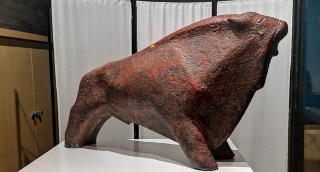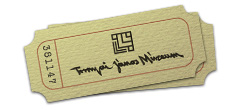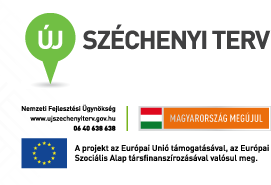Ethnographic Collection
Folk Art
Local artists of Hódmezővásárhely, with personal interests in folk art, raised the idea of founding a museum at the end of the 19th century.
In 1904, the industrial and agricultural exhibition gave a big boost to the idea of founding a museum. This was the very exhibition where (at Tornyai’s proposal), the organizers set up a “chat room”, which became part of the exhibition’s fine art and ethnographic department. The collecting of ethnographic objects was mostly conducted by Lajos Kiss (1881-1965) – later renowned ethnographer – under the guidance of Tornyai. By this time, the artists living in the city also owned smaller or larger ethnographic collections, which they lent to the exhibition. Tornyai made available 92 pieces, while Béla Endre exposed 37 ethnographic objects.
The exact date of the museum’s foundation is 15th February 1905. The city, however, did not provide a definitive home for the collection. First, it was sheltered in the room of the Beer House used by Tornyai, then in the empty rooms of the Lord Lieutenant’s apartment.
In 1907 the city rented three rooms of the Pokomándy house in Zrínyi Street for the museum’s purposes. Lajos Kiss arranged his first ethnographic exhibition in these premises. Initially, the museum's collection was almost entirely made up of ethnographic material, so people also referred to it as Ethnographic Museum. This ideal state did not last long, as the house was sold in the spring of 1908, and thus, from then on, the museum was on constant move.
In 1913 the city bought the Imre József-house on state subvention. (Now, it is one of the museum’s buildings under Dr. András Rapcsák Street 16.) However the museum could move into this building only in 1927.
The new permanent ethnographic exhibition with regular opening hours was opened on the 1st July 1928. The exhibits were grouped around themes including farming, fishing and crafts. The local, highly valued pottery material became the highlight of the exposition.
After the departure of Lajos Kiss, no regular ethnographic collecting was done by the museum for four decades, and the collection had no professional curator.
In 1952, the doctor and folk song collector Attila Péczely (1897-1964) joined the staff of the museum which already bore the name of János Tornyai. Until his retirement in 1959, he added 460 objects to the ethnographic collection of the museum.
The inventory of the ethnographic material was initiated by director Miklós Galyasi in 1950, who entrusted with the job Lajos Kiss, Kossuth Prize-winning ethnographer. In the second half of the 1950s, the collection was also enriched by Mária Kresz, whose top priority was to study the remains of the local pottery art. She also published major papers on this topic.
In the 1960s and 70s, there was no systematic collecting of ethnographic items and between 1972 and 1980, Klára Tóth ethnographer-museologist was in charge of the collection. In this period two more exhibition spaces were added to the museum: the Potter House of Csúcs was opened on the 25th May 1974, while the Farm Museum of Kopáncs in April 1975.
Vera Nagy took over the management of the ethnographic collection in November 1980. Then the collection had 5,876 items. Between 1990 and 2009 the outstanding pieces of the collection could be seen in a three-hall exhibition presenting the city’s folk art. The last decades of the ethnographic material saw an extraordinary increase of the textile collection, thanks to Vera Nagy’s research on weaver craft. In 2005, the collection had 8,757 pieces. The collection is composed of various parts, including 30% pottery, 18% textiles, 16% farming equipment, 12% handicraft tools, 13% household utensils, 5% furniture, and 6% other objects.
The ethnographic material of the János Tornyai Museum is outstanding not only on the county level, but also for the whole country, representing the artifacts of all three components of urban folk art: pottery, painted furniture, and hair embroidery.
| Tornyai János Múzeum | |
| 6800 Hódmezővásárhely, Dr. Rapcsák András út 16-18. | |
| Telefon: | +36 62 242 224 |
| E-mail: | tjm@tjm.hu |
| Térkép: |  |




